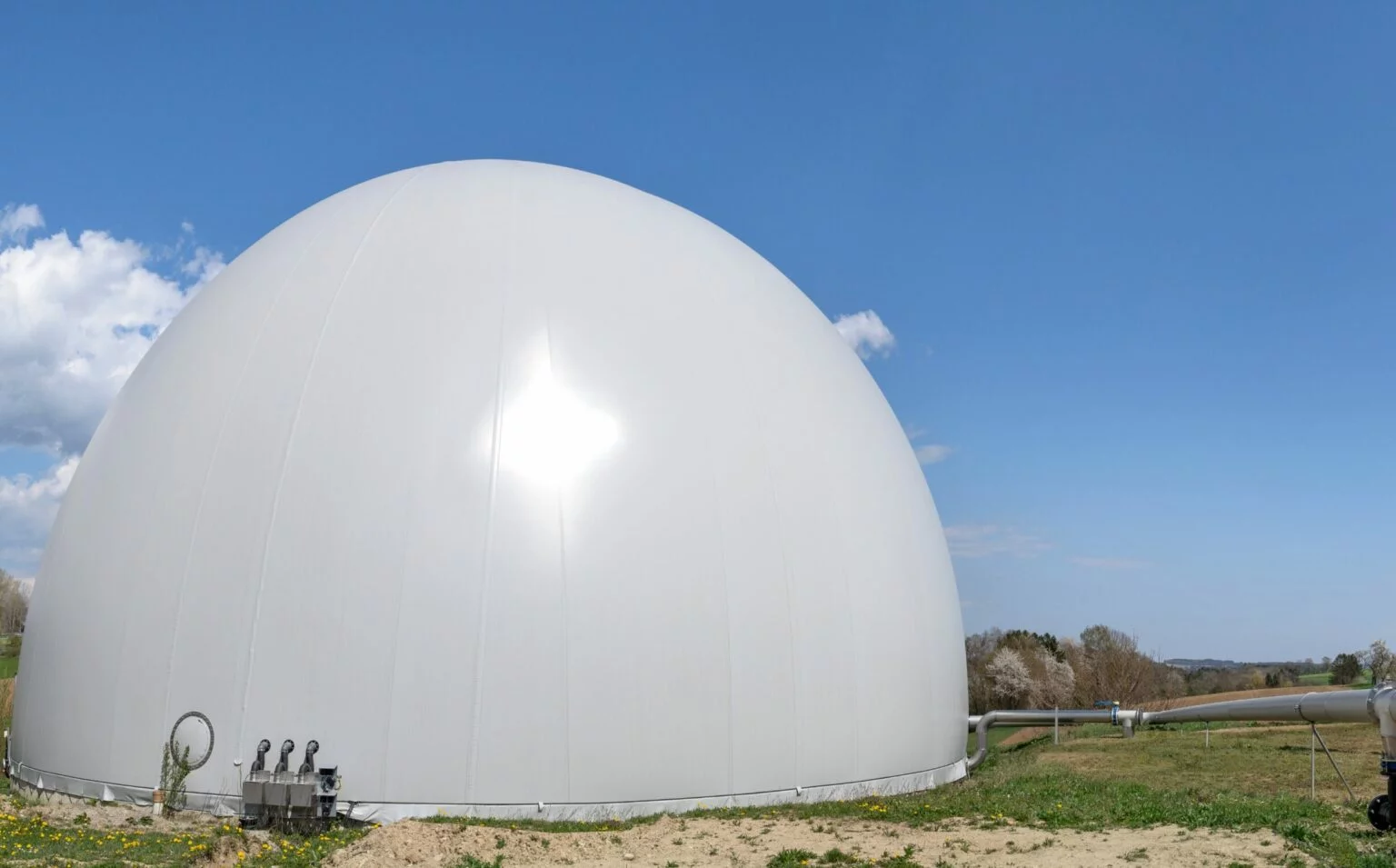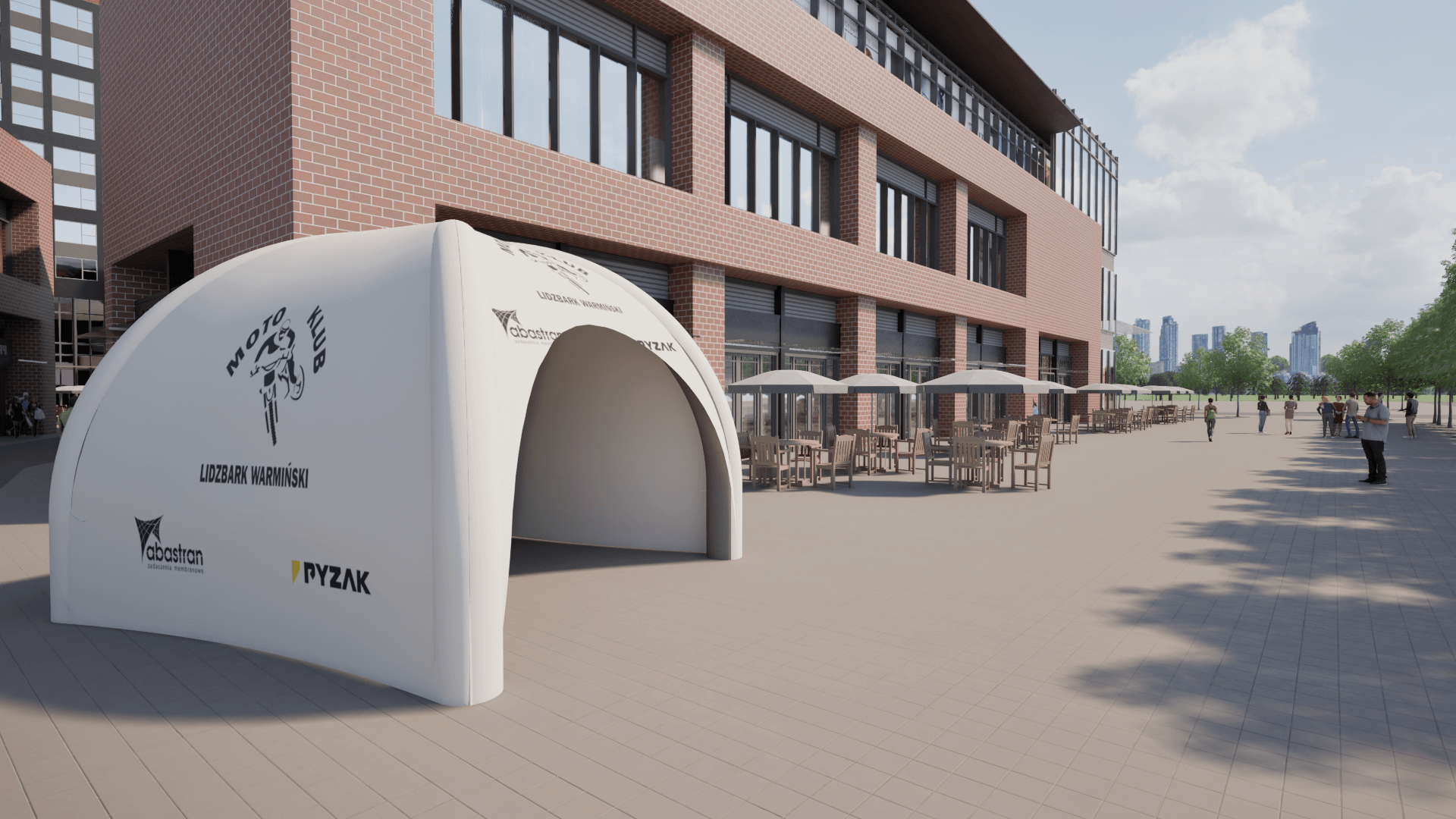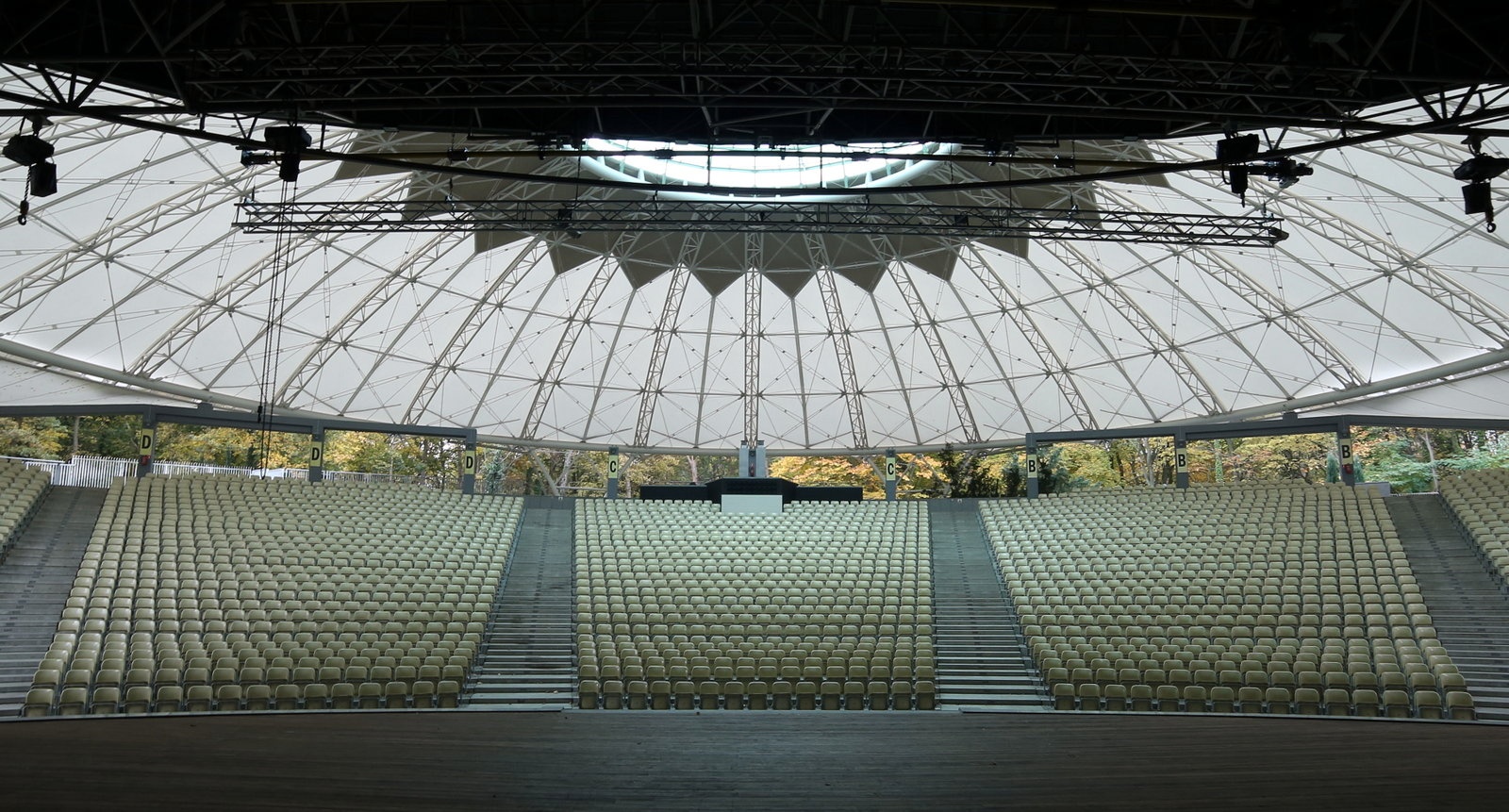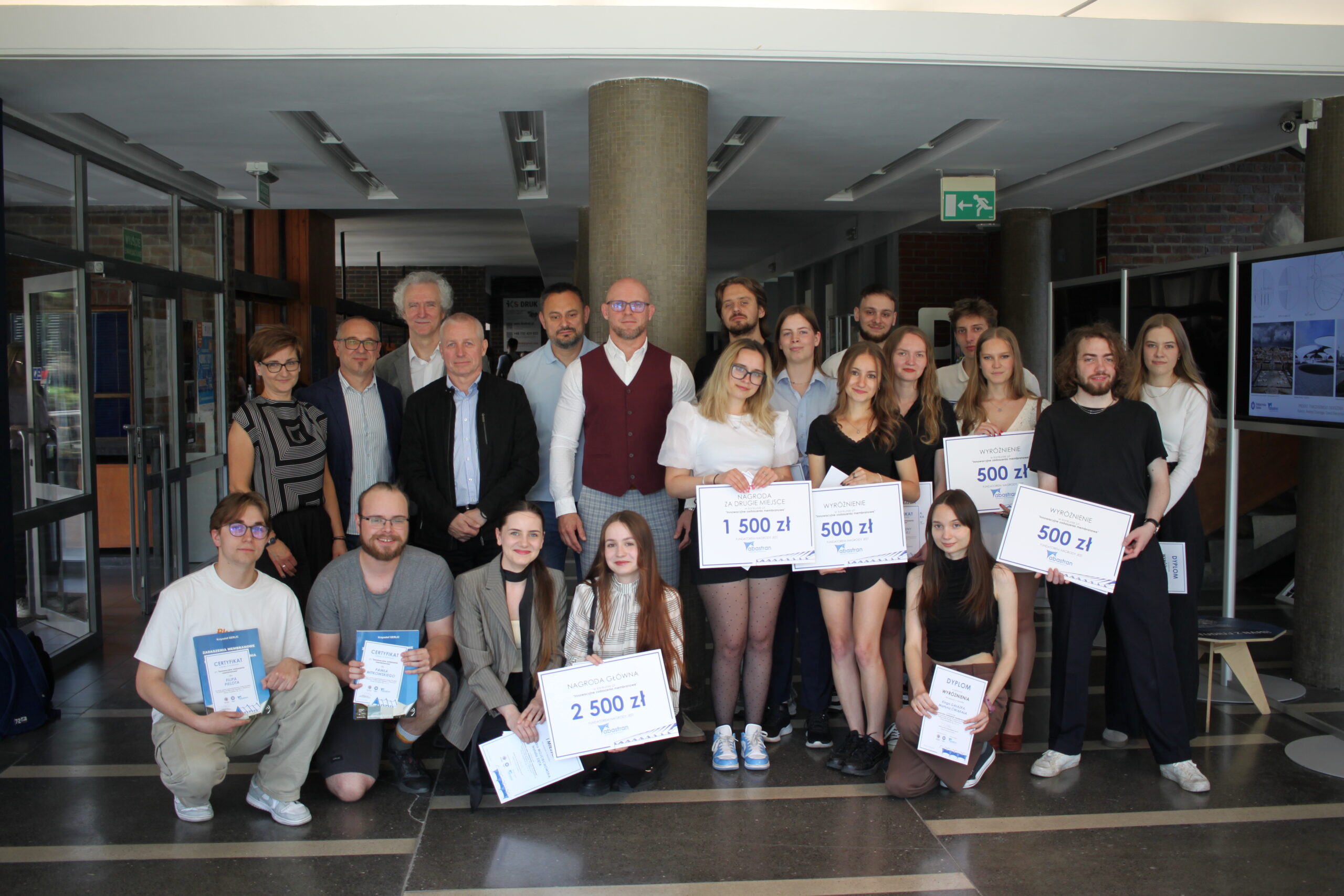
Biogas Domes as a Source of Renewable Energy
In the face of global climate challenges and the growing demand for clean energy, biogas is emerging as one of the most stable renewable energy sources. Unlike solar or wind energy, biogas production is not dependent on weather conditions, making it an extremely valuable element of the energy mix. Biogas domes, an integral part of biogas plants, play a key role in the process of storing and processing biogas into electricity and heat. Abastran, a company specializing in advanced membrane structures, offers solutions that are also applicable in the biogas sector, where durability and tightness of the structure are priority issues.
What is biogas and how is it produced?
Biogas is a renewable energy source produced as a result of anaerobic fermentation, i.e. the decomposition of organic matter in the absence of oxygen. Under controlled conditions of a biogas plant, anaerobic microorganisms decompose biomass, releasing a mixture of gases consisting mainly of methane (50-70%) and carbon dioxide (30-50%), with a small amount of other compounds such as hydrogen sulfide or ammonia.
The key to efficient biogas production is the appropriate selection of substrates. The most commonly used are:
- Agri-food waste (fruit, vegetable, dairy residues)
- Silage from corn and other energy crops
- Slurry and manure
- Sewage sludge
- Waste from the food industry
This variety of raw materials means that biogas plants can be adapted to local conditions and available organic waste, which increases their ecological value. Instead of going to landfills, organic waste becomes a valuable source of energy, while reducing methane emissions to the atmosphere, which as a greenhouse gas is 28 times more harmful than carbon dioxide.
The fermentation process takes place in special fermentation chambers, where optimal temperature and pH conditions are maintained, enabling efficient work of microorganisms. It is above these chambers that biogas domes are installed, responsible for collecting the resulting biogas.
Biogas domes – construction and operation
Biogas domes are specialized structures that serve as a roof for fermentation chambers, and at the same time serve as tanks for storing the produced biogas. Modern biogas domes are most often made of advanced membrane materials, which must meet stringent requirements for tightness, resistance to weather conditions and the effects of chemical compounds contained in biogas.
The key structural elements of biogas domes are:
- Flexible external membrane resistant to UV radiation and weather conditions
- Inner layer ensuring tightness and chemical resistance
- System of fastenings and seals at the fermentation chamber
- Control and measurement devices monitoring biogas pressure
- Ventilation and safety systems
Modern biogas domes are often designed as double-membrane structures, where the space between the membranes is filled with air under pressure, which ensures the stability of the structure and additional insulation. This solution allows for the storage of biogas at variable pressure, and at the same time protects against uncontrolled release of gas into the atmosphere.
Technologies used in the production of tent hall covers are also used in the construction of biogas domes, where similar material parameters play a key role: tensile strength, tightness and durability in changing weather conditions.
Potential for the development of biogas plants in Poland
Poland has a huge and still untapped potential in the field of biogas production. According to expert estimates, the theoretical production potential of biogas in our country is 13-15 billion m³ per year. This is an amount that could satisfy about 50% of the country’s demand for natural gas. Currently, there are only 383 biogas installations in Poland, including 148 agricultural biogas plants, which is a fraction of the possibilities offered by the biogas sector.
Importantly, full use of the national biogas potential could significantly contribute to Poland’s energy independence. Some analyzes even indicate that the consistent development of biogas plants could lead to the complete elimination of fossil fuel imports to Poland.
A noteworthy solution supporting the development of biogas plants is the concept of cable pooling, i.e. sharing connections to the power grid by various RES sources. Thanks to this, biogas plants can cooperate more effectively with photovoltaic or wind installations, supplementing their work during periods of low production. Biogas plants are a stable source of energy that can produce electricity 24/7 regardless of the weather.
Designing efficient biogas plants requires a comprehensive approach and design optimization, which translates into increased efficiency of the entire system while reducing investment and operating costs.
Summary
Biogas domes are a key element of the biogas plant infrastructure, enabling efficient storage and use of biogas for the production of electricity and heat. As a stable source of renewable energy, biogas plants have a chance to play a significant role in Poland’s energy transformation, while contributing to the management of organic waste and reducing greenhouse gas emissions.
Abastran, thanks to its experience in the design and production of advanced membrane structures, offers solutions that can be successfully used in the biogas sector. Specialized membranes and support structures adapted to the specific requirements of biogas plants are one of the key elements determining the efficiency and safety of the entire biogas production system.
If you are interested in the possibilities of using our solutions in your biogas project or want to learn more about membrane technologies that can increase the efficiency of your biogas plant – contact Abastran experts. Together, we can contribute to the development of clean energy in Poland.

Advertising Tents as an Investment – How to Increase Brand Recognition at Events?


Competition for Innovative Membrane Roofing – Results and Inspirations
This year, we had the pleasure of organizing a competition together with the Faculty of Architecture at the Silesian University of Technology for 6th-semester students to design innovative membrane roofing. The award ceremony, held at the Faculty of Architecture in Gliwice, was the culmination of the young designers’ creative and technical journey.








